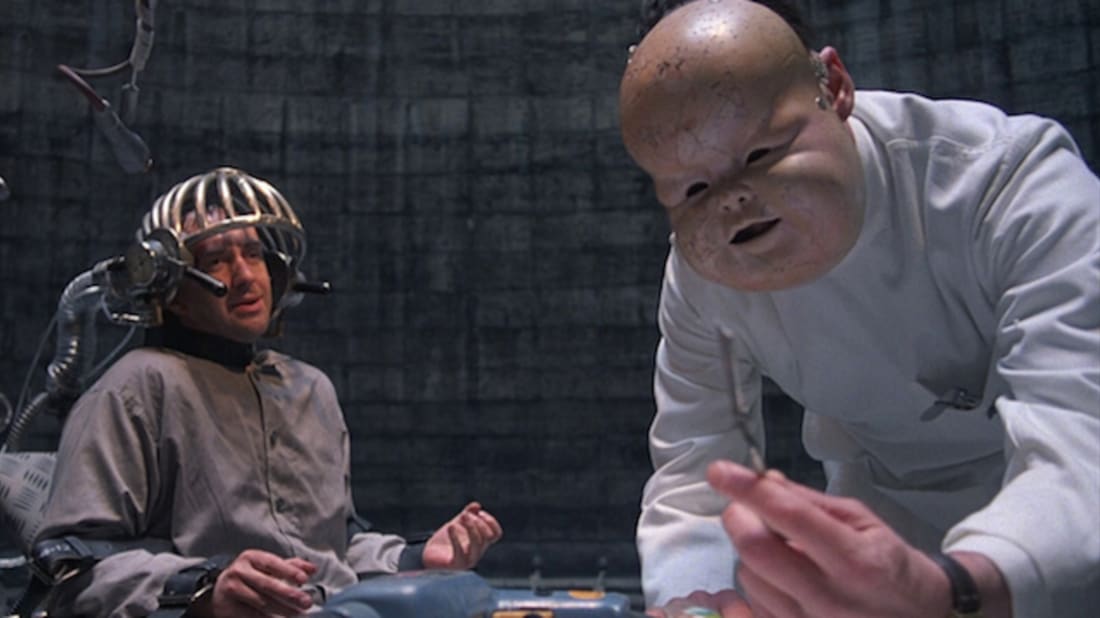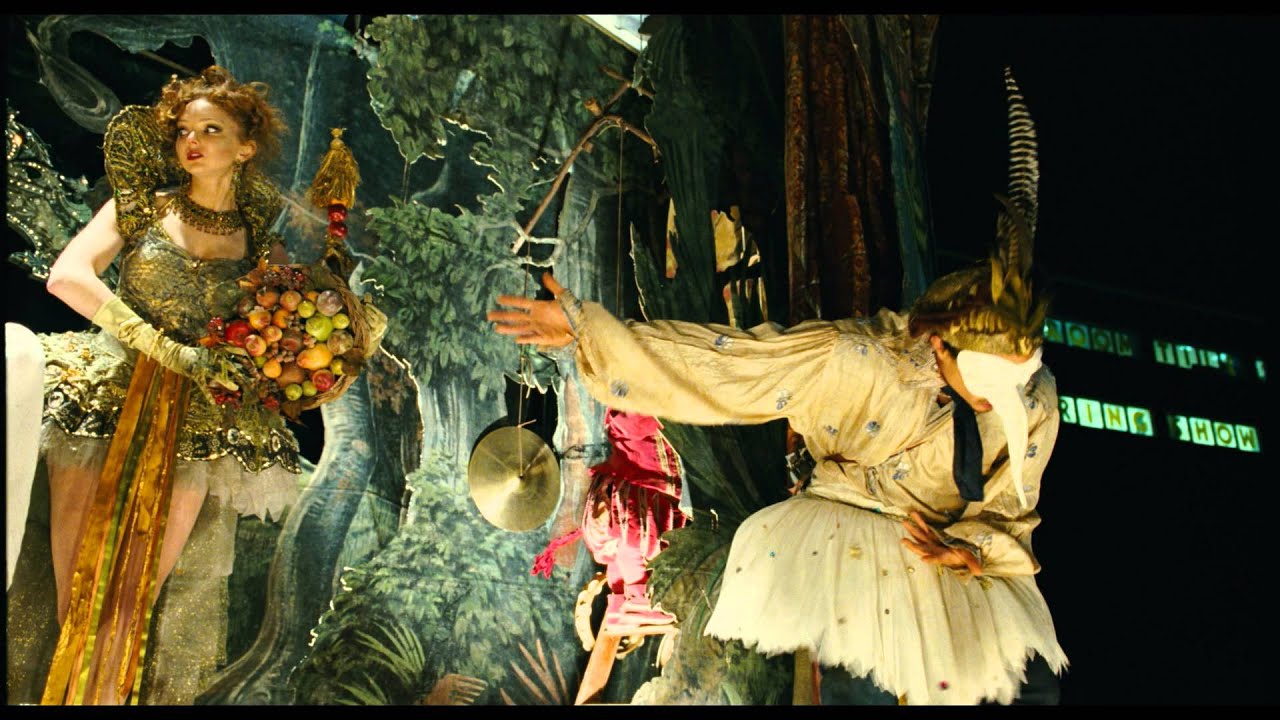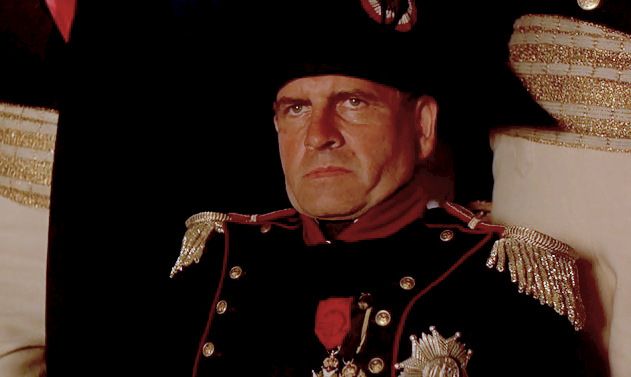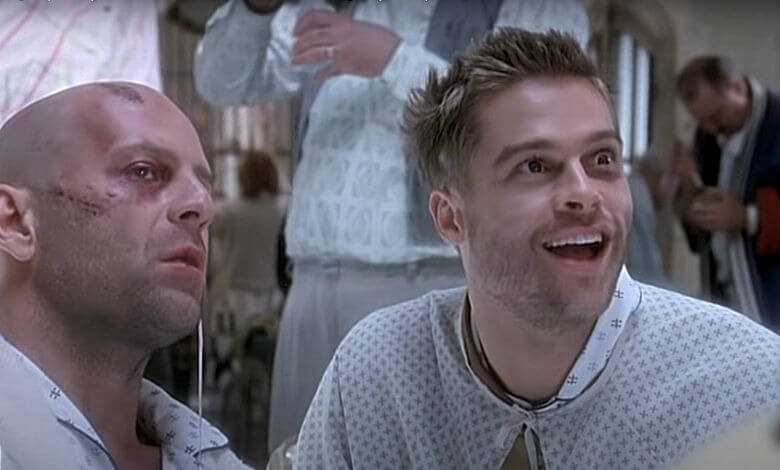
This title contains a cropped version of "Tribute to Terry Gilliam at the american film festival of Deauville - France" by Vegafi used under CC BY.
Terry Gilliam first became famous as a member of Monty Python’s Flying Circus, but his later career as an acclaimed film director is arguably more impactful and significant. We examine the calling signs of his work.
No matter his success as director or writer, Terry Gilliam will always be remembered for his contribution to Monty Python’s Flying Circus. Despite his name, Gilliam was the only American member of the posse. Although he wasn’t featured as heavily as the rest of the cast, Gilliam found his niche as the show’s animator. Those silly and very British newspaper/cardboard style animations that gave the show its unique style were created and organized by Gilliam. It’s only fitting then that he used his artistic talents after his time on the TV show to become a full-fledged movie director.
Gilliam’s “hits” as director include a co-directing credit for Monty Python and the Holy Grail, 1981’s Time Bandits, Brazil (1985), Twelve Monkeys (1995), and the movie adaptation of Fear and Loathing in Las Vegas (1998). The reason I put “hits” in parenthesis is because Gilliam was never really a commercial success as director, but has found popularity as his films have since earned cult status. Gilliam’s artistic talents have never been questioned, but his films are often eccentric and too indulgent for the mainstream. Gilliam is still active today with his latest film being The Man Who Killed Don Quixote (2018)
So the question is, if you are watching a Gilliam film and you don’t know it, what are the things to look for that would identify it as such? Here are five of Gilliam’s trademarks as director, in no particular order.
The Double-Whammy Twist at the End

I don’t want to give away any spoilers here, so I won’t give any examples. To put it simply, if you thought that M. Night Shyamalan was the king of twists at the end of films, well then you’ve never seen a Gilliam film. Not only are the endings of Gilliam’s films often unexpected, they are downright bizarre and often inconclusive. That’s right. Gilliam likes to leave his films with something to make you think.
On more than one occasion Gilliam ends his film with a character either in a dream, living out a dream/vision, or waking up from a dream (or dream-like state). Either way they have to face their fears and the reality of their situation which they had been trying to avoid. The fact that so many of Gilliam’s characters live a life full of illusions means that reality is skewed for them for the majority of the film, only to be straightened out in the final minutes.
Movies like 12 Monkeys, The Imaginarium of Dr. Parnassus, The Man Who Killed Don Quixote, and Fear and Loathing in Las Vegas have circular plots that are essentially started again at the end. In Imaginarium it is Parnassus who starts doing street performances again after his previous travelling theater ends in disaster. In Fear and Loathing the main character can’t remember what happened to him, but by replaying his recordings he begins to piece together his chaotic night all over again.
Furthermore, there isn’t usually just one twist at the end, there are two (or three), and they usually take place one-right-after-the-other. Gilliam really knows how to “pull-out-all-the-stops” at the end of his films, and really gives his audience the finale in true showman spirit. For example, in Time Bandits, the film’s imaginary setting seems to be cast aside as a hallucinatory dream after the climax, only to have one final twist before the credits that seems to shift perspective yet again.
Surreal Visuals

From his days as animator on Monty Python, Gilliam has forged a unique and distinct visual style. While not all his films exhibit visuals as cartoonish as those in Monty Python, they nevertheless never seem normal. Furthermore, even if the scenery appears mundane it’s not. There is always so much detail packed in that it can often be overwhelming. Gilliam is not afraid to dial in a twisted perspective by altering or warping either the camera angle (see next paragraph) or the spacing of on-screen items/people.
He’s not afraid to be silly, goofy, cheesy, or even too dark. Gilliam relies heavily on his visuals to create a tone in his films, and is one of the all-time best at doing so on a consistent basis. To bring his characters into his crazy worlds, Gilliam often relies on their interaction with props. Consider the mirror in Dr. Parnassus, the windmills in Don Quixote, or the wardrobe in Time Bandits. These features act as a “bridge” between our world and Gilliam’s.
In addition to surreal visuals, the production designs as a total often emphasize a break from reality. Brazil and 12 Monkeys are steeped in a cluttered retro-futurism while The Brother’s Grim brings medieval folk tales to life in horrifying fashion. Hairstyle, makeup, and clothing is just as important as the scenery and props. Robin Williams’ disheveled appearance in The Fisher King draws parallels to his mental struggles, where as the suits and drab greys in Brazil speak of the film’s frightening dystopia.
The Wide Angle Lens

Along with the surreal special effects, Gilliam makes heavy use of the wide angle lens to distort the audience’s perspective. This gives simple shots more interesting detail and can help to isolate characters and locations when needed. It’s an excellent example of a director using the physical form of his film to better capture ideas from the script and enhance his story telling ability.
The wide angle is often used to capture a character’s face in a close-up. Prominent examples include the opening scene in Fear and Loathing, and the climax in Brazil. In both cases the lenses distorts the character’s face which is a visual indication of their warped perspective on the world around them. Furthermore, it helps to question the film’s narration. In both of these cases the character’s perspectives become unreliable, and the use of the lenses to distort their face is one way in which Gilliam invites the audience to question what they are witnessing. Is it real, a dream, a story?
This is also a creative decision utilized to make the audience feel uneasy. Since Gilliam’s films are never straightforward, he uses his camera to help structure the story. In addition to the use of lens distortion to suggest an untrustworthy character, Gilliam utilizes fast sweeping motions and shots of vast perspectives to help the audience make a break from “normal” reality. It enhances the dream-like narrative by making it easier for the audience to question the truth of what is being depicted.
Admiration for History

Nearly all of Gilliam’s films have something to do with history or make some reference to it. If his characters are alive in modern times, they are often preoccupied with ages that have passed long ago (Fisher King, Time Bandits). Even when his films take place in the future, that future is always modeled on the past. Look at the retrograde technology abundant in Brazil or the cluttered mess of machinery in Twelve Monkeys that looks like it is from the Edwardian era.
Gilliam’s films are full of fairy tales, legends, and archetypal characters that have been part of literature and popular culture for many centuries. Jabberwocky is based on a poem by Lewis Carrol. The Adventures of Baron Munchausen is based on a set of tall tales from the 18th Century, and The Man Who Killed Don Quixote is a modern interpretation of the 17th Century novel by Miguel de Cervantes. Time Bandits visits several prominent figured from history, where as Monty Python and the Holy Grail recreates the Arthurian legend as a hilarious farce.
But even when a film doesn’t have a direct connection to history, the characters are either obsessed with something in their past, or trying to avoid living in the present. Tideland follows the story of a little girl who has a traumatic childhood and lives almost exclusively in her imagination. In Zero Theorem the main character is obsessed with a phone call that will explain to him the meaning of life. And in Dr. Parnassus, the main character is able to bring peoples’ imaginations to life so that they can figure out their deepest desires. In all cases the characters struggle to deal with the problems of the present.
Rapidly Deteriorating Timeline

In addition to the surreal visuals, unreliable narration, and unhealthy character obsessions, Gilliam’s films often “loose the thread” of their plots. But don’t be concerned, this is on purpose. Gilliam’s stories often have to bend the fabric of time to tell their stories. They often start off on stable footing but gradually loose control over the passage of time. By the end the concept of time is all but forgotten, and the audience is catapulted into what could be a dream.
Its no surprise that drug use plays a major role in many of Gilliam’s films. From Fear and Loathing in Las Vegas to 12 Monkeys and Tideland there are characters that struggle with substance abuse. Not only does this make them unreliable (see above), but it strains their relationships with the other characters. Furthermore, it creates an obsession which comes to define their struggles, and ultimately causes them to loose touch with reality. Even if there isn’t a drug dependency, all of Gilliam’s films feature a character which has an unhealthy obsession, and this ultimately breaks down the film’s narrative structure over time.
This can make Gilliam’s films difficult to comprehend because he can become less concerned about telling a story and more concerned about the experience of the story itself. I feel like this aspect of his direction is somewhat autobiographical. Gilliam has said that he doesn’t want to cater to audience expectations. He is more concerned about putting on a show and opening his audiences’ mind to a new perspectives. To accomplish this he has to break some of the rules we are accustomed to when viewing film. All the aspects I described above help him to accomplish this.
Also, of note: Gilliam is also famous for many of his projects going horribly wrong, most often during production. Most of the problems have come from disagreements that have caused work to be delayed. For two decades, Gilliam has tried but failed to direct a film The Man Who Killed Don Quixote, but many many problems have prevented that from happening. Most recently, Heath Ledger unexpectedly died during the filming of The Imaginarium of Doctor Parnassus which not only caused delays, but a rewrite so that the work that Ledger had done up to that point (which was considerable) could be left in the film without having to do a recast and start over.
Want more Directors’ Trademarks?














